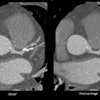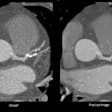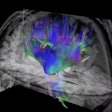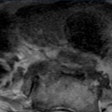
Human-centric design has transformed industries and enabled forward-thinking companies to excel over their competitors. McKinsey’s research underscores the benefit of human-centric design, revealing that brands that center consumers report 32% higher revenue than their traditional counterparts. Implementing a patient-centric redesign of their image exchange in healthcare is having a similar impact and enabling many providers to deliver on the Quadruple Aim of:
● Enhancing the patient experience and building stronger lifelong relationships
● Improving population health
● Reducing healthcare costs and avoiding revenue loss
● Achieving staff satisfaction and increasing wellness
Imaging is the starting point of many healthcare journeys, however, accessing and exchanging imaging is often a source of friction because the processes and platforms create delays and inefficiencies. The imaging exchange process presents a unique opportunity to build trust, strengthen the patient-provider relationship, and drive patient loyalty. In this article, I’ll provide insights on how a patient-centric redesign helps healthcare organizations improve image exchange and deliver on the Quadruple Aim.
Challenges facing healthcare organizations during the image exchange process
Technology has revolutionized access to information, setting higher expectations for healthcare. Patients can now effortlessly track Uber orders and quickly receive Amazon packages, setting a new standard for speed and convenience. These advancements in technology have led patients to expect the same level of efficiency when accessing their medical information.
Through my engagement with health leaders and imaging departments across North America, I’ve heard about a consistent set of concerns facing healthcare organizations today. In addition to growing patient expectations, providers grapple with network barriers, rising healthcare costs, and inefficient resource management which poses challenges for enhancing the patient experience. Below, I explore these challenges and highlight the barriers preventing healthcare organizations from delivering on the Quadruple Aim.
Challenges satisfying and retaining patients
Patient satisfaction remains a primary concern within healthcare. A 2022 survey by The Beryl Institute - Ipsos PX Pulse revealed that 76% of patients haven’t had a positive patient experience in three months. The survey also stated that over 60% had an outright negative experience.
The lack of fast, easy access to their medical records also compounds patient dissatisfaction — 62% percent of patients feel more informed about their online shopping deliveries than their health and 72% believe that they should have access to their medical imaging at the same time as their doctor.* However, accessing and sharing their imaging records isn’t always easy. Many patients face difficulties sharing imaging with different care teams — their medical information is disjointed and fragmented and is often stored across multiple systems. When they access their imaging reports, the reports contain complex medical terms most patients are unfamiliar with, causing them to feel uninformed about their own care.
Network barriers negatively impact population health
Healthcare organizations also encounter roadblocks when exchanging imaging records across networks. Many rely on manual stop-gap solutions and work with multiple systems to resolve interoperability issues. Physicians face difficulties finding and reconciling this fragmented information, leading them to potentially overlook critical data that can help them make more precise diagnoses. According to a 2022 patient survey, 46% of patients have been diagnosed or knew someone who had experienced a misdiagnosis. Tech leaders are attuned to the urgent need to overcome health data barriers. More than 50% of CIOs plan on spending up to 20% more on interoperability initiatives in 2023.
Increasing costs and profit challenges
While costs for supplies and labor increase, many health systems are still recovering from low patient volume and revenue shortfalls from the COVID-19 pandemic. According to a Kaufman Hall National Hospital Flash Report, YTD Operating EBIDA margins are down 11% compared to the same period in 2020. Consequently, healthcare leaders find themselves with limited resources to scale their population health strategies and care management programs. Additionally, organizations struggle to build tight alliances with patients without costly investment in staff resources, resulting in operational inefficiencies and continued care gaps.
Staff shortages and dissatisfaction
Staffing shortages lead to higher levels of dissatisfaction and burnout among staff and physicians. According to the American Hospital Association, health organizations may face a shortage of 124,000 physicians by 2033 and up to 450,000 nurses by 2025.
When healthcare organizations are understaffed, the existing workforce has to shoulder additional responsibilities, which can strain resources and exacerbate inefficiencies in various processes, including image exchange. Without consolidation of solutions, staff have to learn and execute on multiple systems, which adds to the cognitive workload when onboarding new staff and dealing with turnover.
How to design and implement a patient-centric approach to image exchange
Challenges in healthcare greatly impact the patient experience; therefore, overcoming barriers relies heavily on improving the patient experience. Redesigning the image exchange process with an innovative, patient-centric approach can enhance the patient experience while solving challenges in healthcare that prevent organizations from achieving the Quadruple Aim. Below, I provide three proven strategies providers can use to integrate patient-centricity and make progress in achieving the Quadruple Aim.
- Design ecosystems rather than islands. Healthcare providers can benefit from thinking holistically about IT infrastructure by connecting fragmented patient information without added friction. By investing in solutions that seamlessly connect with their existing EMR, HIS, PACS, VNA, and legacy image exchange systems, providers can get more value out of their current solutions.
For example, Mackenzie Health, a multi-site health system with over 300,000 annual imaging scans, connected its patient portal with PocketHealth to provide patients with a single sign-on experience. By integrating their existing solution with PocketHealth and providing patients with real-time access to their imaging records, Mackenzie Health improved the patient experience and streamlined staff workflow. They also reduced inefficient stop-gap solutions (like burning CDs) that consumed staff time and energy. - Embrace the patient as part of the process.Providers can implement a more patient-centric approach by involving patients in the image exchange process. This consists of giving patients the access and tools to become engaged participants in their care journey.
Valley View Hospital, a group of hospitals, clinics, and practices in Colorado, redesigned their image exchange process and improved the patient experience by using PocketHealth. Before implementation, they faced challenges sharing records with out-of-network providers. By embracing patients as part of the process via a patient-driven workflow, Valley View Hospital reduced CD burning by 90% and non-labor costs associated with burning CDs by 95%. - Design systems and processes with the staff experience in mind. Providers can identify critical activities that align with organizational goals and automate additional tasks that consume staff time and energy. They can streamline workflows by eliminating manual processes and integrating patient-centric solutions to enhance operational efficiency.
Imaging Partners of Orange County, a group of imaging centers in California, reclaimed valuable staff by implementing PocketHealth. Previously, they relied on burning CDs to share patients’ imaging records, which created friction for both staff and patients. After seamlessly integrating with PocketHealth, patients were able to access their imaging with no clerical or IT intervention. PocketHealth’s provider exchange capabilities also enabled staff to instantly share imaging with its referring community and fulfill its standard of sending same-day reports.
As demonstrated by these examples, the challenges facing healthcare organizations are structural, and redesigning patient care can help providers overcome these barriers and deliver on the Quadruple Aim. By focusing on a key moment in the patient care journey — image exchange — and investing in a patient-centered solution, providers can both empower patients and break free of image access barriers.
Ready to take your Enterprise imaging strategy to the next level? It’s time for an image exchange solution that not only solves network barriers but builds stronger lifetime relationships with your patients.
Visit our Lunch & Learn at RSNA 2023 Annual Meeting to learn more about delivering The Quadruple aim through patient-centric image exchange.
*Patient survey methodology: An online survey of 1,524 patients was completed between April 4-6, 2023, using Leger's online panel. Patients included those (or those in their household) who received medical imaging in the past three years. A probability sample size would yield a margin of error of +/ - 2.5 percent, 19 times out of 20.
Rishi Nayyar is the co-founder and CEO of PocketHealth.
The comments and observations expressed are those of the author and do not necessarily reflect the opinions of AuntMinnie.com.















